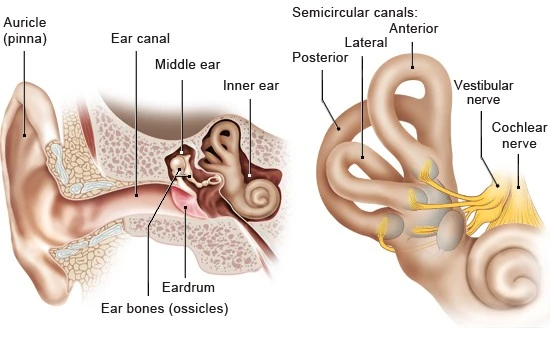
Our hearing and balance are two crucial senses that work together to help us navigate the world around us. Both of these senses are located in our ears, and they rely on a complex interplay of structures and signals to function properly.
To understand how our hearing and balance are related, let’s take a closer look at each of these senses and how they work.
Hearing
Our hearing is a complex process that involves the ears, the brain, and the nervous system. When sound waves enter our ears, they cause tiny hairs in the inner ear to vibrate, which in turn sends electrical signals to the brain. These signals are interpreted as sound, allowing us to hear the world around us.
Balance
Our sense of balance is also located in the inner ear, specifically in the vestibular system. This system consists of three semicircular canals filled with fluid, as well as two chambers called the utricle and saccule. When we move our heads, the fluid in these structures moves, sending signals to the brain about our movement and orientation in space.

The Relationship Between Hearing and Balance
The relationship between hearing and balance is complex and multifaceted. Both of these senses rely on the same structures in the inner ear, and they both send signals to the brain about our position and movement in space. As a result, problems with one sense can often affect the other.
For example, if you have an ear infection that affects your inner ear, you may experience dizziness or vertigo in addition to hearing loss. Similarly, people with hearing loss may be more prone to falls and other balance problems, as they may have difficulty detecting changes in their environment.
In addition, some medical conditions can affect both hearing and balance. For example, Meniere’s disease is a condition that affects the inner ear and can cause symptoms such as hearing loss, vertigo, and tinnitus (ringing in the ears). Benign Paroxysmal Positional Vertigo (BPPV) is another common balance disorder that can be treated by an audiologist, physical therapist, ENT, or PCP. BPPV results in vertigo when moving in a certain position and can be treated by a professional. There are several ear and balance related conditions that one can present with. For more information about these consult with your primary care physician.
Maintaining Hearing and Balance
To maintain healthy hearing and balance, it’s important to take good care of your ears. This includes protecting your ears from loud noises, getting regular check-ups with an audiologist, and treating any ear infections promptly. Additionally, regular exercise can help improve your balance and reduce the risk of falls.
If you experience any problems with your hearing or balance, it’s important to see a healthcare professional for evaluation and treatment. With the right care, you can protect and maintain these crucial senses and continue to navigate the world around you with ease.
